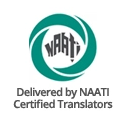
Linguists trace the origins of Sinhala back to the 5th century BC. It arrived in Sri Lanka with colonists from northern India. Unlike its neighbor Tamil, which belongs to a separate Dravidian family, Sinhala stems from the Indo-Aryan branch of the Indo-European language family. It also shares ancestry with languages like Hindi and Bengali. Over time, Sinhala absorbed influences from Pali, the language of Theravada Buddhism, and Sanskrit, the ancient language of India.
The development of Sinhala can be broadly divided into four distinct epochs. The earliest form, Elu, flourished from the 3rd century BCE to the 4th century CE. This period was followed by Proto-Sinhala, which spanned from the 4th to the 8th centuries CE. Medieval Sinhala emerged in the 8th century CE and continued to evolve until the 13th century CE. Finally, Modern Sinhala, the form spoken today, has been developing since the 13th century. Moreover, it continues to adapt to the modern world.
Shaping the Soundscape
Sinhala’s unique sound system is a result of several key phonetic developments. One such development is the loss of aspiration as a distinguishing factor for consonant sounds. For example, the word “kanavā” meaning “to eat” in Sinhala corresponds to the Sanskrit word “khādati” and Hindi word “khānā,” where aspiration differentiates the sounds.
Furthermore, consonant clusters and double consonants were simplified over time. Sanskrit words with clusters like “viṣṭā” (meaning “time”) evolved into “viṭṭa” in Sinhala Prakrit and eventually became “viṭa” in Modern Sinhala. These phonetic changes over centuries shaped the distinct soundscape of Sinhala as we know it today.
A Legacy in Literature
Sinhala’s literary heritage dates back centuries. Ancient chronicles like the Mahavamsa, penned in the 5th century AD, not only documents the island’s history but also showcases the early development of Sinhalese prose.
Over time, Sinhalese literature started blossoming through a variety of storytelling mediums. Poems like the Kavsilumina (translated to The Crown Jewel of Sinhala Poetry), attributed to King Parakramabahu II in the 13th century gave an insight into the time. Prose fiction also thrived. Legendary works like the Amāvatura (translated to Flood of the Ambrosia) provide not only entertainment but also a window into the social and religious beliefs of the time.
Sinhala in a Globalized World
In today’s interconnected world, Sri Lanka is actively promoting and revitalizing the Sinhala on several fronts, ensuring its relevancy for generations to come. The language enjoys official language status alongside Tamil, ensuring its continued use in government administration and legal documents. For instance, all official government websites in Sri Lanka are available in both Sinhala and English, guaranteeing equal access to information for all citizens.
Also, the language is actively promoted in the education system. The national curriculum mandates the use of Sinhala as the medium of instruction in primary education, fostering a strong foundation in the language from a young age. This focus on Sinhala in education helps guarantee its continued use by future generations.
Media also plays a crucial role in promoting Sinhala. The Sri Lankan government operates several radio and television stations that broadcast exclusively in Sinhala. Additionally, a thriving private media landscape offers a wide variety of Sinhala newspapers, magazines, and online publications. This extensive use of Sinhala in media ensures its continued relevance in daily life.
At TranslateSwift, we take the intricacies of Sinhala translation seriously. Our team of experienced translators have a deep understanding of the language’s nuances, guaranteeing accurate and culturally sensitive translations for all kinds of purposes. TranslateSwift bridges the language gap seamlessly, translating from Sinhala to over 120 languages and vice versa.
Other Languages
- English
- Spanish
- German
- Dutch
- French
- Italian
- Afrikaans
- Albanian
- Amharic
- Arabic
- Armenian
- Azerbaijani
- Basque
- Belarusian
- Bengali
- Bosnian
- Bulgarian
- Cantonese
- Catalan
- Cebuano
- Chichewa
- Chinese - Simplified
- Chinese - Cantonese
- Chinese - Traditional
- Chinese - Mandarin
- Corsican
- Croatian
- Creole
- Czech
- Danish
- Dari
- Esperanto
- Estonian
- Farsi
- Filipino
- Finnish
- Frisian
- Galician
- Georgian
- Greek
- Gujarati
- Haitian Creole
- Hausa
- Hawaiian
- Hebrew
- Hindi
- Hmong
- Hungarian
- Icelandic
- Igbo
- Indonesian
- Irish
- Japanese
- Javanese
- Kannada
- Kazakh
- Khmer
- Korean
- Kurdish
- Kyrgyz
- Lao
- Latin
- Latvian
- Lithuanian
- Luxembourgish
- Macedonian
- Malagasy
- Malay
- Malayalam
- Maltese
- Maori
- Marathi
- Mongolian
- Montenegrin
- Myanmar
- Nepali
- Norwegian
- Odia
- Pashto
- Persian
- Polish
- Portuguese
- Punjabi
- Romanian
- Russian
- Samoan
- Scots Gaelic
- Serbian
- Sesotho
- Shona
- Sindhi
- Sinhala
- Slovak
- Slovenian
- Somali
- Sundanese
- Swahili
- Swedish
- Tajik
- Tagalog
- Tamil
- Telugu
- Thai
- Turkish
- Ukrainian
- Urdu
- Uyghur
- Uzbek
- Vietnamese
- Welsh
- Xhosa
- Yiddish
- Yoruba
- Zulu
